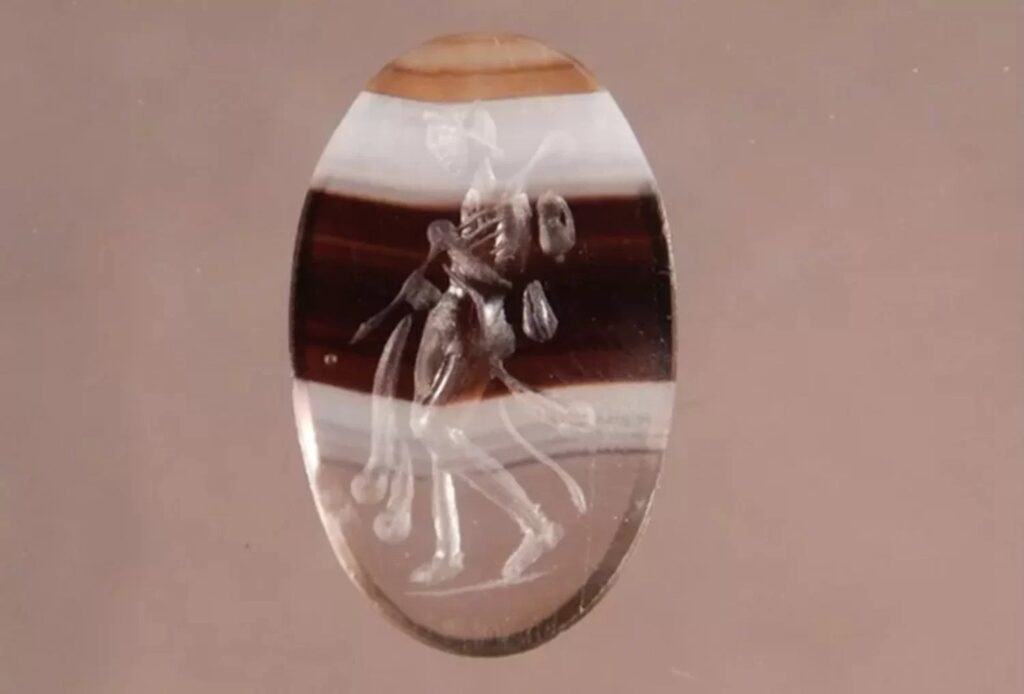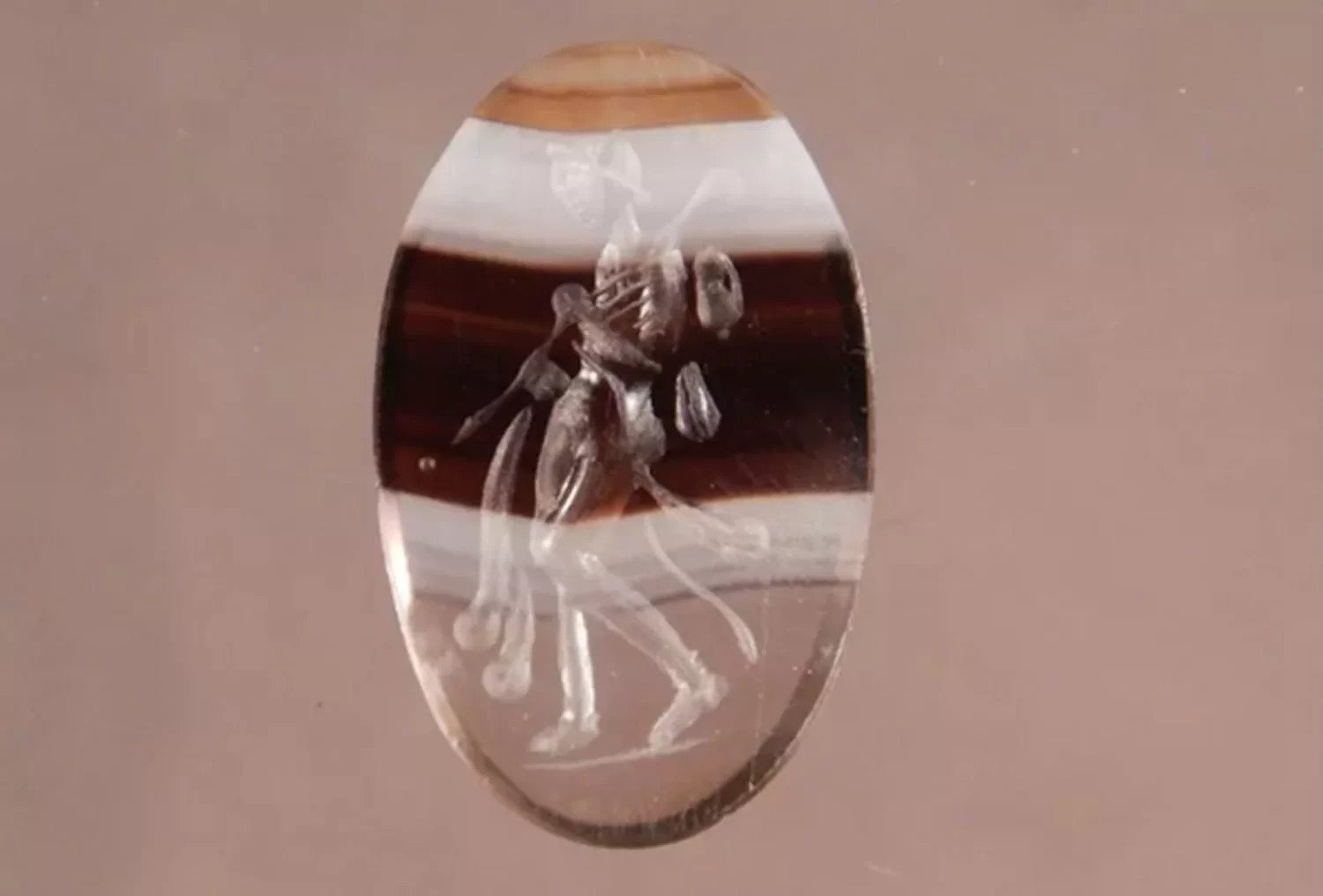Rare Roman Gemstone Engraved with Mythological Figure Is Discovered in Italian Lagoon
An extremely rare engraved Roman gemstone has been discovered underwater by researchers near Venice in northern Italy.

Researchers at the Ca’ Foscari University of Venice found the ancient piece of jewelry during an excavation dive in Lio Piccolo, a village just north of the city. It appears to be engraved with a mythological figure, and has a colorful, stripy appearance.
Professor Carlo Beltrame, who led the excavation alongside Dr. Elisa Costa, said in a statement that it was a rare find, especially in an underwater environment.
It isn’t the first such discovery in that area, which suggests it’s a place that used to be visited by wealthy Romans.
“In a lagoon environment it is a rather rare find, to date we have news of two other precious gems found in Torcello and at Barena del Vigno,” Beltrame said.
Alberto Ballarin, the councillor for culture, said in the statement that finds such as this are giving Italians answers by “discovering [their] roots.”
“The discovery of the precious agate gem is another piece that confirms the importance of continuing to finance research projects in order to outline an identity of the Cavallino-Treporti area and community in the past,” Ballarin said.
“The collaboration with professor Beltrame is also taking shape with the scientific dissemination of the underwater archaeological discoveries of the northern lagoon.”
Lio Piccolo used to be, and remains, a thriving fishing area. The underwater excavations have helped archeologists to understand the history of the area.
A structure there, consisting of a brick base and oak walls—which dates back to the first to the second century A.D.—had been puzzling archaeologists until this point. The tank lies 11 feet below the surface, and appears to be something that was used for the conservation of oysters.
After the excavations, archaeologists concluded that the structure was used to hold oysters before they were eaten, and that it wasn’t used for farming.
“Alongside this system there is a brick paving laid on poles, many fragments of valuable frescoes and some fragments of black and white mosaic which, in the 1980s, prompted the discoverer of this site, the amateur archaeologist Ernesto Canal, to interpret it as a prestigious villa,” Beltrame said.
“The basin and the floor plans offer a precious marker, because they are well dated, for the study of the variations of the sea and of the local subsidence.”

New discoveries relating back to ancient Roman times are being made all the time.
Just last week, a theater belonging to infamous Roman Emperor Nero was discovered in Rome, near the Palazzo della Rovere.
The theater was a significant find, as it’s referenced in several ancient texts, but it was the first time it had been uncovered.




